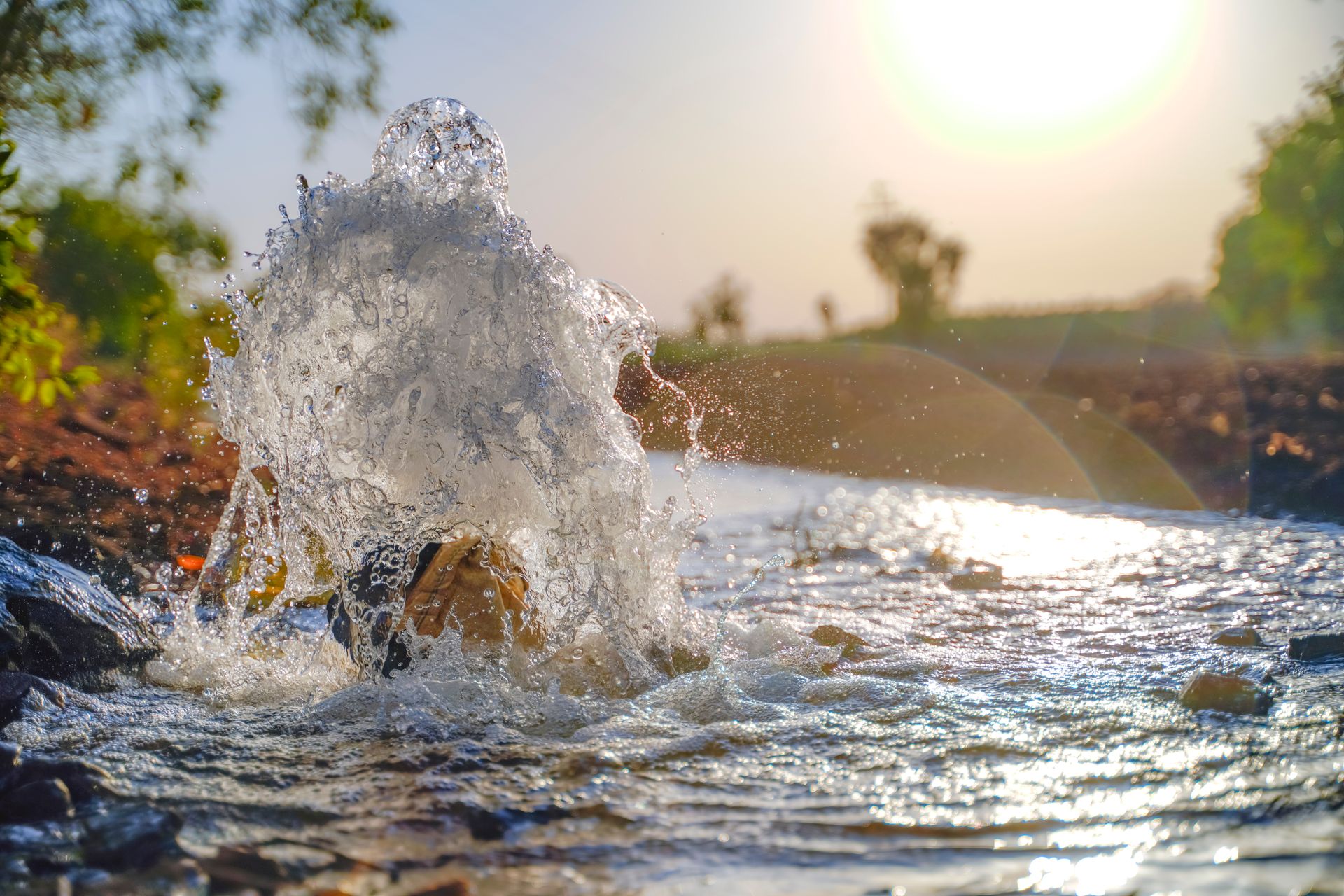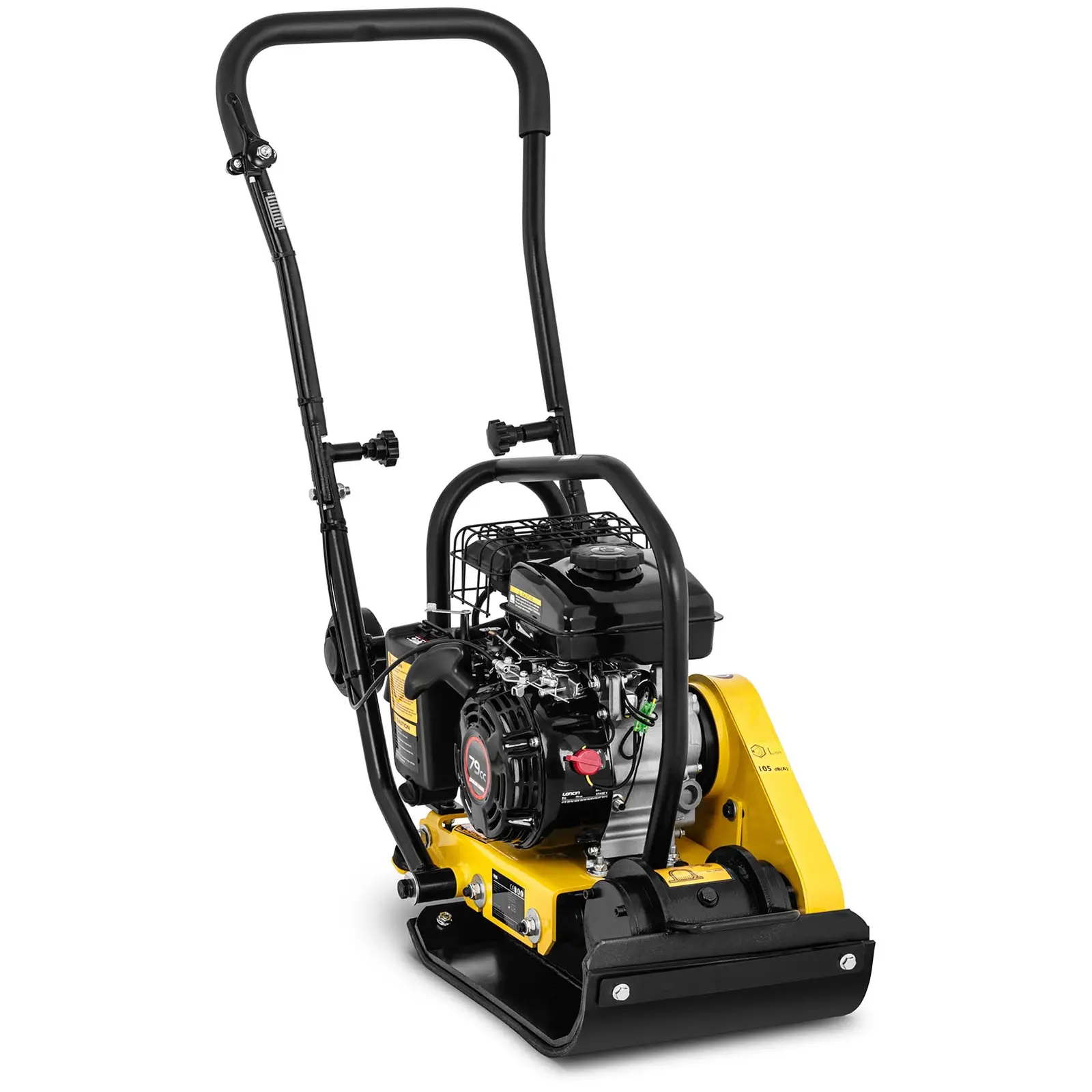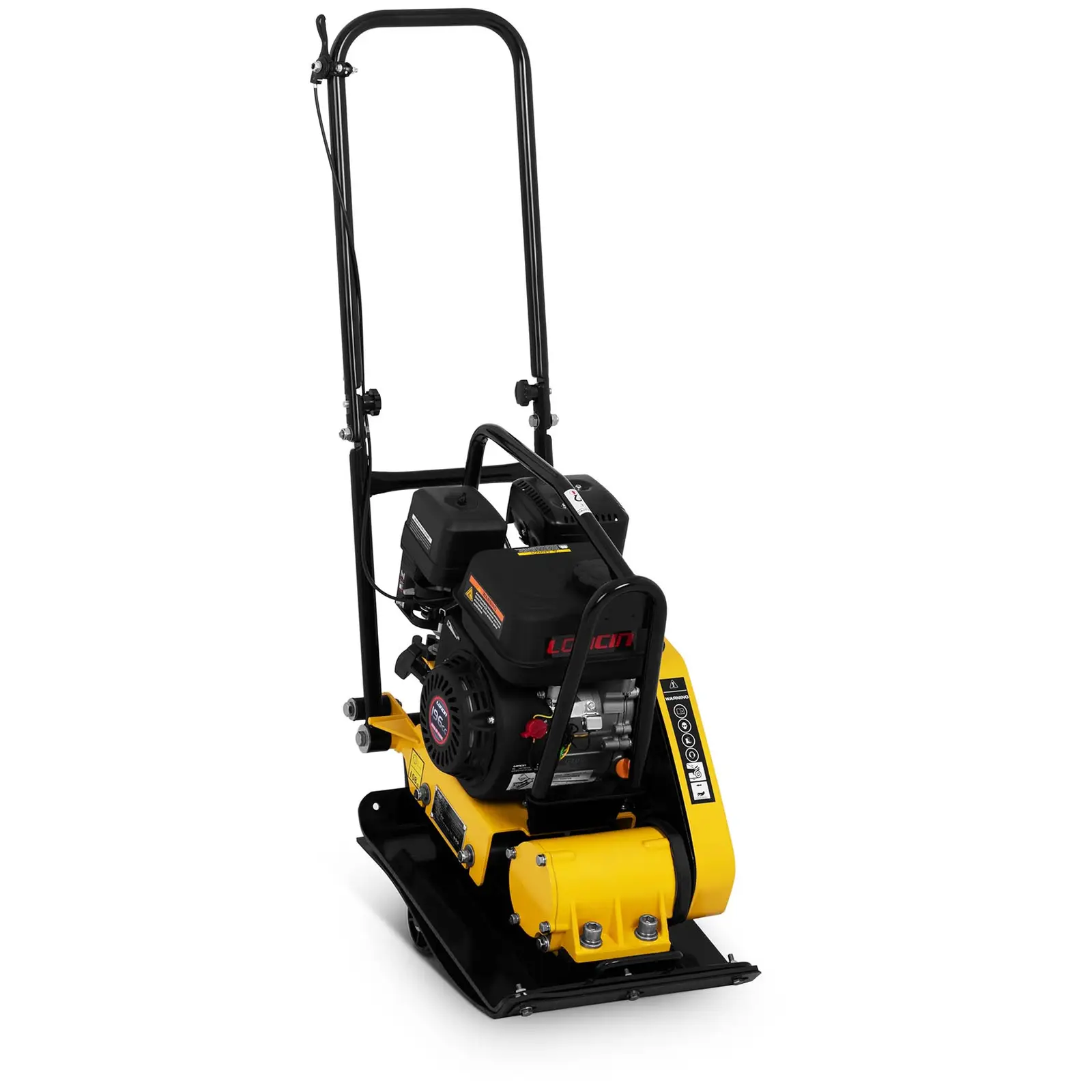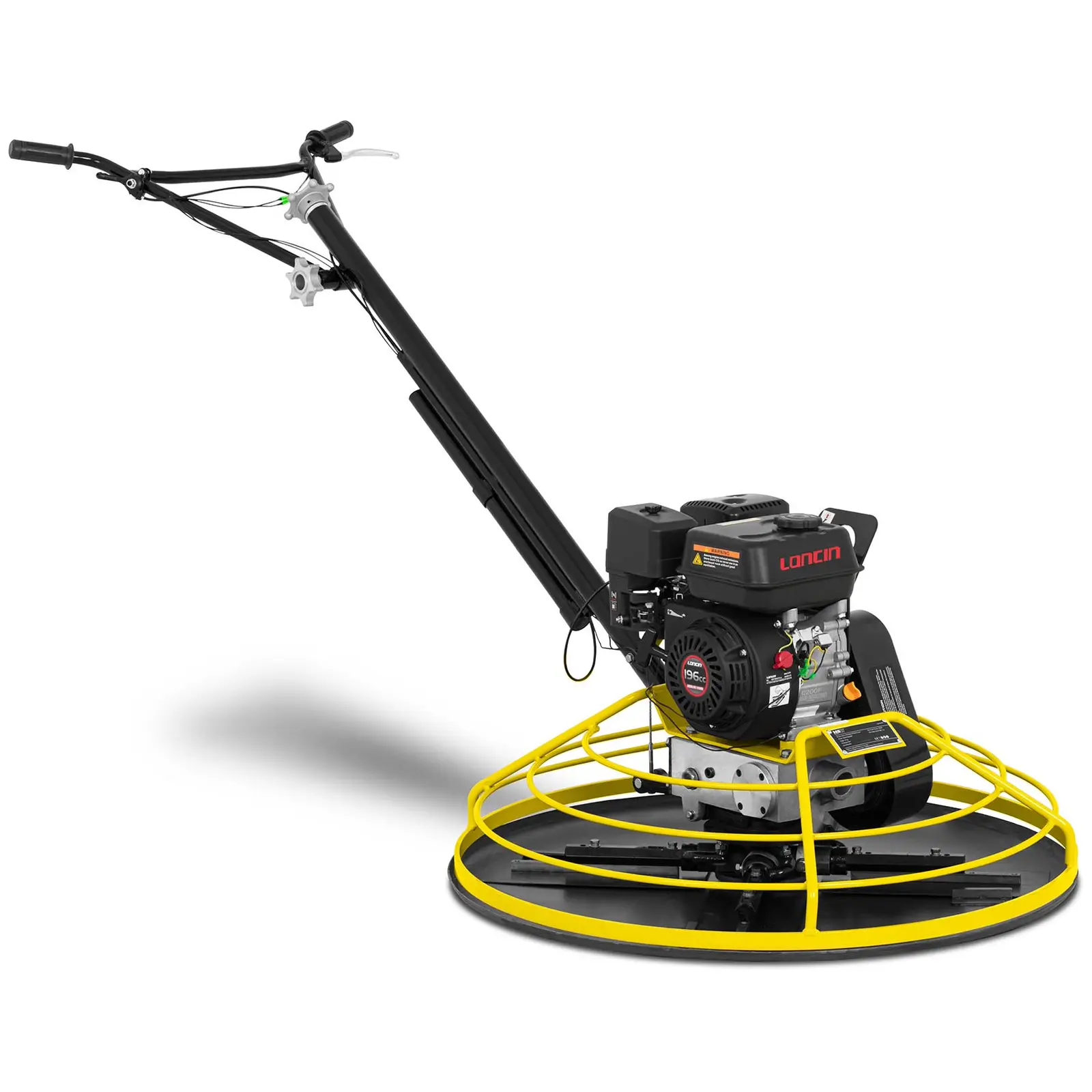Building a soakaway in your garden is a great solution if you have your own biological wastewater treatment system, or if you experience flooding in your garden after heavy rain. However, before starting work, find out how a soakaway works and what conditions should be met. Read our article covering everything you need to know about this topic.

Building a soakaway in your garden is a great solution if you have your own biological wastewater treatment system, or if you experience flooding in your garden after heavy rain. However, before starting work, find out how a soakaway works and what conditions should be met. Read our article covering everything you need to know about this topic.
What is a soakaway?
A soakaway is a reservoir embedded in the ground, into which rainwater or pre-filtered water from a biological treatment system is drained. It collects wastewater and then gradually seeps it into the ground.
There are generally two types of soakaways – made of plastic or concrete rings. The first type is usually shaped like a bell, although there are also simpler models that look like pipes. The wells are bottomless, and often have holes at their ends to further improve water distribution. A lid with a vent protrudes above the ground.
An important element of a soakaway is the drainage layer, i.e. several levels of crushed stone of different sizes. Its task is final filtering of the accumulated water so that it does not pose a threat to the groundwater. The top layer of drainage is made of larger elements, e.g. stones or pebbles. The next levels should be made of finer and finer crushed stone. The last layer should be gravel and sand.
How does a soakaway work?
In the tank of the soakaway, a pipe is placed through an opening in the wall through which water from the gutters or the domestic wastewater treatment system is fed. It is very important that the pipe is below the ground freezing level. Otherwise it could get blocked by ice in winter.
The water in the soakaway gradually flows through the successive layers of drainage, at which stage the mineral and organic compounds are broken down into smaller pieces. Bacteria in the soil feed on these particles. As a result, clean and filtered water is distributed in the ground.
A soakaway and a home wastewater treatment system
As already mentioned, constructing a soakaway can be combined with installing a biological wastewater treatment system. Such systems usually have special infiltration drainage, which is the last stage of the entire system. However, as you will need a large area to install it, not every plot of land is able to meet these requirements. This is not a problem in the case of a soakaway, where the water is distributed deep into the soil and not all over your garden.
It is worth noting, however, that only pre-treated wastewater should end up in the soakaway. For this purpose a sediment trap is used, in which biological processes decomposing pollutants take place. This process ensures 85% purified water, which is more than enough. It will later be filtered once again through the drainage layer of the soakaway.
The solution is an excellent alternative to a traditional septic tank. You don’t have to worry about emptying it regularly, and it will also improve the quality of the soil. However, if you plan to dig a septic tank in your back garden, it is worth considering one with a drainage system.
Soakaways and rainwater drainage
Soakaways are also an excellent solution in areas with impermeable or poorly permeable soil. This applies primarily to land which has clayey soil. In such cases rainwater will not soak into the soil, thus creating flooding or mud that will last even for several days.
And although not many people are aware of it, the issue of rainwater disposal is regulated by law, which states that the building plot should be adapted to drain water from rainfall to a rainwater drainage system, drainage ditches, retention reservoirs or onto an internal unpaved area. However, if this is not possible, a soakaway is the perfect solution. Simply connect it to the building’s gutter system, and your garden flooding problem will be minimised. Remember to regularly clean the tank from leaves, branches and other litter from the gutters.
An improperly installed and designed irrigation system can also contribute to the formation of puddles or mud. Therefore, it is important to know how to plan garden irrigation in order to do it correctly.
Rules and regulations for building a soakaway
Building a soakaway involves a number of rules and regulations that should be considered in order to start work.
Firstly, ensure that the soakaway is built on impermeable or weakly permeable ground. The level of groundwater is also important. If it is relatively close to the surface, then constructing a soakaway is out of the question. To check both of these issues, you should use the services of a specialised company that can analyse the soil and water conditions. According to the law, the depth of a soakaway should be approx. 3 m, while its lowest point should not be closer than 1.5 m to the groundwater level. In addition, a deeper excavation will require additional permission.
As in the case of drilling a deep well, the location of the soakaway on your land is also important. It should be located:
- min. 2 metres from any buildings,
- min. 3-5 metres from the border of neighbouring plots,
- min. 30 metres from the water supply drain.
Placing a soakaway in a place that does not comply with the above guidelines will be tantamount to rejection of the application for a permit. When submitting an application, you should attach a map of your land containing the location of the soakaway, its dimensions and the distances from any buildings.
Building a soakaway – necessary tools and materials
Specialised construction equipment and materials will be required to build a soakaway close to your home. Depending on which type of soakaway you want in your garden, you will need either a plastic one or one made of concrete rings. In turn, drainage pipes will be used to supply water from the wastewater treatment or gutter system. Models with full walls and a diameter of 15 cm will work best.
In the case of a soakaway with concrete rings, you can do it manually by selecting the soil from the inside and adding further segments as you go deeper. Another method is to dig a pit for the well with a small HDS mechanical excavator. This will be faster, but the costs of renting the appropriate equipment are quite high. In the case of the trenches for drainage pipes, it is important that they are placed below the freezing level, i.e. at a depth of approx. 120 cm. Also, bear in mind that their outlet should be approx. 20 cm above the drainage layer.
You can now add the next levels of water filtering, starting with the finest crushed stones and ending with larger stones. Once done, both the soakaway and the pit should be secured with geotextile, and then filled. For this purpose, you can use gravel or soil from the trench cleared of turf, roots and other debris. To finish off, compact the ground around the well entrance. A vibrating base or plate compactor is ideal for this purpose.
Soakaways – summary
A soakaway will make life much easier for the owners of biological wastewater treatment systems and those struggling with flooding or mud after heavy rain. It will not only allows you to get rid of unnecessary water efficiently and ecologically, but will also improve the quality of the soil on which a beautiful garden can be created. However, before you grab a spade in order to dig a hole, remember that you can only build it on impermeable or weakly permeable ground.










Share